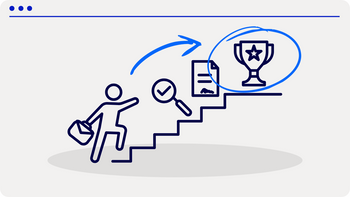

In today's digital age, email marketing remains a powerful tool for businesses to engage with their customers. However, maintaining a strong sender reputation is crucial to ensure that your emails reach the intended recipients' inboxes and avoid being flagged as spam.
In this blog post, we'll dive deeper into the concept of sender reputation and explore how segmenting your email list can help improve deliverability and enhance the overall effectiveness of your email marketing campaigns.
Understanding Sender Reputation
Segmenting Your Email List
The Customer Lifecycle Approach
The Importance of Engagement
Filtering Inactive Subscribers
Understanding Sender Reputation:
Sender reputation refers to the credibility and trustworthiness of the email sender in the eyes of internet service providers (ISPs) and email clients.
ISPs use various metrics to evaluate sender reputation, including the frequency of spam complaints, bounce rates, and engagement metrics like open rates and click-through rates.
A poor sender reputation can result in your emails being filtered into spam folders or, worse, completely blocked from reaching recipients' inboxes.
Segmenting Your Email List:
One effective strategy to safeguard your sender reputation is to segment your email list. Rather than sending emails to your entire subscriber base indiscriminately, segmenting involves categorising subscribers into smaller groups based on specific criteria.
The most common segmentation method is creating an "engaged segment" comprised of subscribers who have recently interacted with your emails.
The Customer Lifecycle Approach:
To understand why sending to the whole list may harm your sender reputation, it's crucial to view email marketing from the perspective of a customer's lifecycle with your business.
During the initial two weeks of a customer's introduction to your email list, it's crucial to prioritise engagement and ensure that your emails capture their attention. This period sets the foundation for building a positive sender reputation.
The Importance of Engagement:
Engagement is a key factor that ISPs consider when determining whether your emails are valuable to recipients. When subscribers open and interact with your emails, it signals to ISPs that your messages are relevant and not unwanted spam.
Focusing on engagement during the early stages increases the likelihood of your emails landing in the primary inbox and being seen by subscribers.
Filtering Inactive Subscribers:
As time goes on, some subscribers may lose interest in your products, services, or content. This natural attrition is expected, and it's crucial to recognise when subscribers become disengaged. Unopened emails, deletions, or flagging your emails as spam can harm your sender reputation.
To mitigate this, it's important to filter out inactive subscribers from your regular email campaigns and focus on re-engagement strategies or ultimately unsubscribing them through a sunset automation. Read more about re-engaging your customers here.
Conclusion:
Maintaining a strong sender reputation is vital for the success of your email marketing efforts. By adopting a customer lifecycle approach and segmenting your email list, you can ensure that your messages are relevant, engaging, and delivered to the right recipients' inboxes.
Remember, it's better to have a smaller, highly engaged subscriber base than a large list that harms your sender reputation. Prioritise quality over quantity, and watch your email campaigns thrive while building lasting relationships with your customers.
If you're ready to take your email marketing strategy to the next level and optimise your sender reputation, I'm here to help. As an expert in email marketing and sender reputation management, I offer personalised coaching services tailored to your specific needs.
SKY'S RECOMMENDATIONS:
Frequently Asked Questions
What exactly is sender reputation?
It’s like a credit score for your email domain. Internet service providers (ISPs) use it to decide if your emails land in the inbox, promotions tab, or spam.
How can I check my current sender reputation?
You can use free tools like Google Postmaster or third-party services such as Talos Intelligence. These tools give insights into whether ISPs see you as trustworthy.
What’s the fastest way to improve a poor sender reputation?
Start by cleaning your list, focusing on engaged subscribers, and avoiding sudden spikes in sending volume. Consistency and relevance are key to rebuilding trust with ISPs.





